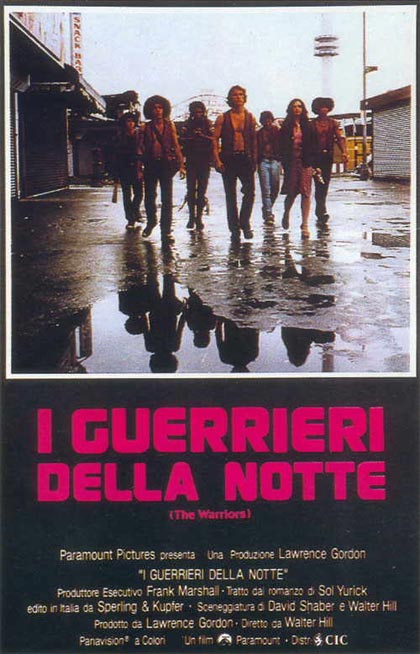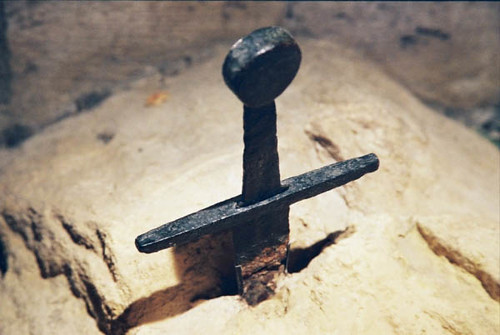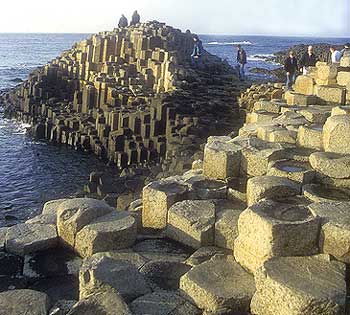




Irezumi: l’arte del tatuaggio giapponese
Oct 18th, 2007 by GianlucaeKanako
In Giapponese i tatuaggi vengono chiamati irezumi (入れ墨, 入墨, 文身, 剳青, 黥 or 刺青) ireru inserire sumi inchiostro nero) o horimono (horu inscrivere mono qualcosa).Il popolo giapponese aveva pensato di utilizzare i tatuaggi per entrambi scopi; decorativi e spirituali, la pratica prende piede dal periodo Jomon (~ 10000 aC).All’inizio del periodo Meiji il governo giapponese, volle tutelare la propria immagine e fare una buona impressione sugli Occidente, dichiarò di fatto fuorilegge i tatuaggi, gli irezumi quindi assunsero connotazioni di “criminalità”.Tuttavia, gli stranieri che si recarono in Giappone furono affascinati dalla certosina competenza degli artisti del tatuaggio iruzumi al punto che la tradizione continuò in segreto per trasmissione verbale.Sebbene in Giappone il tatuaggio irezumi è stato legalizzato dalle forze di occupazione nel 1945, ha conservato purtroppo l’immagine della criminalità. Nella tradizionale giapponese i tatuaggi irezumi sono spesso associati con la famigerata mafia giapponese nota come “Yakuza”. Molti luoghi in Giappone, come bagni pubblici, terme, centri benessere ancora hanno il divieto tassativo per clienti con tatuaggi, ricordatevelo se andate in Giappone! In Giappone il tradizionale irezumi è ancora fatta da un esperto artigiano tatuista, ma è un processo doloroso che richiede tempo ed è costoso . Un tipico irezumi tradizionale che ricopre il corpo (tatuaggi, che coprono le braccia, schiena, petto e la parte superiore delle gambe, ma lasciando un spazio non tatuato al centro del corpo) può richiedere 1-5 anni con una media di una volta per settimana per completare ed un costo di 25.000 euro.I più classici disegni del tatuaggio tradizionale giapponese sono:
I Dragoni
I Fiori di ciliegio, simbolo della trascendenza ed evanescenza della vita umana
Fudomyo-O,versione giapponese della divinità buddhista Acalanatha, versione furiosa del Buddha
Kara-jishi, animale mitologico
Le carpe koi, simbolo di perseveranza e coraggio (fonte wiki) Per gli appassionati del genere consigliamo assolutamente due libri fantastici (in inglese) sugli irezumi:The Japanese Tattoo by Sandi Fellman (Author), D. M. Thomas (Introduction)Bushido : Legacies of the Japanese Tattoo by Takahiro Kitamura (Author), Katie M. Kitamura (Author)
Oct 18th, 2007 by GianlucaeKanako
In Giapponese i tatuaggi vengono chiamati irezumi (入れ墨, 入墨, 文身, 剳青, 黥 or 刺青) ireru inserire sumi inchiostro nero) o horimono (horu inscrivere mono qualcosa).Il popolo giapponese aveva pensato di utilizzare i tatuaggi per entrambi scopi; decorativi e spirituali, la pratica prende piede dal periodo Jomon (~ 10000 aC).All’inizio del periodo Meiji il governo giapponese, volle tutelare la propria immagine e fare una buona impressione sugli Occidente, dichiarò di fatto fuorilegge i tatuaggi, gli irezumi quindi assunsero connotazioni di “criminalità”.Tuttavia, gli stranieri che si recarono in Giappone furono affascinati dalla certosina competenza degli artisti del tatuaggio iruzumi al punto che la tradizione continuò in segreto per trasmissione verbale.Sebbene in Giappone il tatuaggio irezumi è stato legalizzato dalle forze di occupazione nel 1945, ha conservato purtroppo l’immagine della criminalità. Nella tradizionale giapponese i tatuaggi irezumi sono spesso associati con la famigerata mafia giapponese nota come “Yakuza”. Molti luoghi in Giappone, come bagni pubblici, terme, centri benessere ancora hanno il divieto tassativo per clienti con tatuaggi, ricordatevelo se andate in Giappone! In Giappone il tradizionale irezumi è ancora fatta da un esperto artigiano tatuista, ma è un processo doloroso che richiede tempo ed è costoso . Un tipico irezumi tradizionale che ricopre il corpo (tatuaggi, che coprono le braccia, schiena, petto e la parte superiore delle gambe, ma lasciando un spazio non tatuato al centro del corpo) può richiedere 1-5 anni con una media di una volta per settimana per completare ed un costo di 25.000 euro.I più classici disegni del tatuaggio tradizionale giapponese sono:
I Dragoni
I Fiori di ciliegio, simbolo della trascendenza ed evanescenza della vita umana
Fudomyo-O,versione giapponese della divinità buddhista Acalanatha, versione furiosa del Buddha
Kara-jishi, animale mitologico
Le carpe koi, simbolo di perseveranza e coraggio (fonte wiki) Per gli appassionati del genere consigliamo assolutamente due libri fantastici (in inglese) sugli irezumi:The Japanese Tattoo by Sandi Fellman (Author), D. M. Thomas (Introduction)Bushido : Legacies of the Japanese Tattoo by Takahiro Kitamura (Author), Katie M. Kitamura (Author)
Irezumi (入れ墨, 入墨, 紋身, 刺花, 剳青, 黥 or 刺青) is a Japanese word that refers to the insertion of ink under the skin to leave a permanent, usually decorative mark; a form of tattooing.
The word can be written in several ways, each with slightly different connotations. The most common way of writing irezumi is with the Chinese characters 入れ墨 or 入墨, literally meaning to "insert ink". The characters 紋身 (also pronounced bunshin) suggest "decorating the body". 剳青 is more esoteric, being written with the characters for "stay" or "remain" and "blue" or "green", and probably refers to the appearance of the main shading ink under the skin. 黥 (meaning "tattooing") is rarely used, and the characters 刺青 combine the meanings "pierce", "stab", or "prick", and "blue" or "green", referring to the traditional Japanese method of tattooing by hand.
Contents[hide]
1 History of Japanese tattoos
1.1 Ainu tattoos
2 Japanese tattoos in the Edo period
3 Tattoos in modern Japan
4 The making of a Japanese tattoo
5 Glossary of Japanese tattoo terms
6 Symbolism in Japanese tattoos
7 See also
8 Further reading
9 External links
[edit] History of Japanese tattoos
Tattooing for spiritual and decorative purposes in Japan is thought to extend back to at least the Jōmon or paleolithic period (approximately 10,000 BC). Some scholars have suggested that the distinctive cord-marked patterns observed on the faces and bodies of figures dated to that period represent tattoos, but this claim is by no means unanimous. There are similarities, however, between such markings and the tattoo traditions observed in other contemporaneous cultures.
In the following Yayoi period (c. 300 BC–300 AD) tattoo designs were observed and remarked upon by Chinese visitors. Such designs were thought to have spiritual significance as well as functioning as a status symbol.
Starting in the Kofun period (300–600 AD) tattoos began to assume negative connotations. Instead of being used for ritual or status purposes, tattooed marks began to be placed on criminals as a punishment (this was mirrored in ancient Rome, where slaves were known to have been tattooed with mottoes such as "I am a slave who has run away from his master").
[edit] Ainu tattoos
The Ainu people, the indigenous people of Japan, are known to have used tattoos for decorative and social purposes. There is no known relation to the development of irezumi.
[edit] Japanese tattoos in the Edo period
Until the Edo period (1600–1868 AD) the role of tattoos in Japanese society fluctuated. Tattooed marks were still used as punishment, but minor fads for decorative tattoos—some featuring designs that would be completed only when lovers' hands were joined—also came and went. It was in the Edo period, however, that Japanese decorative tattooing began to develop into the advanced art form it is known as today.
The impetus for the development of the art were the development of the art of woodblock printing and the release of the popular Chinese novel Suikoden, a tale of rebel courage and manly bravery illustrated with lavish woodblock prints showing men in heroic scenes, their bodies decorated with dragons and other mythical beasts, flowers, ferocious tigers and religious images. The novel was an immediate success, and demand for the type of tattoos seen in its illustrations was simultaneous.
Woodblock artists began tattooing.[citation needed] They used many of the same tools for imprinting designs in human flesh as they did to create their woodblock prints, including chisels, gouges and, most importantly, unique ink known as Nara ink, or Nara black, the ink that famously turns blue-green under the skin.
There is academic debate over who wore these elaborate tattoos. Some scholars say that it was the lower classes who wore—and flaunted—such tattoos. Others claim that wealthy merchants, barred by law from flaunting their wealth, wore expensive irezumi under their clothes. It is known for certain that irezumi became associated with firemen, dashing figures of bravery and roguish sex-appeal who wore them as a form of spiritual protection (and, no doubt, for their beauty as well).
[edit] Tattoos in modern Japan
At the beginning of the Meiji period the Japanese government, wanting to protect its image and make a good impression on the West, outlawed tattoos, and irezumi took on connotations of criminality. Nevertheless, fascinated foreigners went to Japan seeking the skills of tattoo artists, and traditional tattooing continued underground.
Tattooing was legalized by the occupation forces in 1945, but has retained its image of criminality. For many years, traditional Japanese tattoos were associated with the yakuza, Japan's notorious mafia, and many businesses in Japan (such as public baths, fitness centers and hot springs) still ban customers with tattoos.
Tattooing and other forms of body decoration and body modification, as in much of the western world, are gaining in popularity in Japan. However, Japanese young people who choose to get tattooed are most often choosing "one point" designs—small designs that can be completed in one sitting—usually in the American or tribal styles. More recently, however sanskrit Siddham script tattoos are becoming more and more fashionable.
Traditional irezumi is still done by specialist tattooists, but it is painful, time-consuming and expensive: a typical traditional body suit (covering the arms, back, upper legs and chest, but leaving an untattooed space down the center of the body) can take one to five years of weekly visits to complete and cost in excess of US$30,000.
[edit] The making of a Japanese tattoo
The word can be written in several ways, each with slightly different connotations. The most common way of writing irezumi is with the Chinese characters 入れ墨 or 入墨, literally meaning to "insert ink". The characters 紋身 (also pronounced bunshin) suggest "decorating the body". 剳青 is more esoteric, being written with the characters for "stay" or "remain" and "blue" or "green", and probably refers to the appearance of the main shading ink under the skin. 黥 (meaning "tattooing") is rarely used, and the characters 刺青 combine the meanings "pierce", "stab", or "prick", and "blue" or "green", referring to the traditional Japanese method of tattooing by hand.
Contents[hide]
1 History of Japanese tattoos
1.1 Ainu tattoos
2 Japanese tattoos in the Edo period
3 Tattoos in modern Japan
4 The making of a Japanese tattoo
5 Glossary of Japanese tattoo terms
6 Symbolism in Japanese tattoos
7 See also
8 Further reading
9 External links
[edit] History of Japanese tattoos
Tattooing for spiritual and decorative purposes in Japan is thought to extend back to at least the Jōmon or paleolithic period (approximately 10,000 BC). Some scholars have suggested that the distinctive cord-marked patterns observed on the faces and bodies of figures dated to that period represent tattoos, but this claim is by no means unanimous. There are similarities, however, between such markings and the tattoo traditions observed in other contemporaneous cultures.
In the following Yayoi period (c. 300 BC–300 AD) tattoo designs were observed and remarked upon by Chinese visitors. Such designs were thought to have spiritual significance as well as functioning as a status symbol.
Starting in the Kofun period (300–600 AD) tattoos began to assume negative connotations. Instead of being used for ritual or status purposes, tattooed marks began to be placed on criminals as a punishment (this was mirrored in ancient Rome, where slaves were known to have been tattooed with mottoes such as "I am a slave who has run away from his master").
[edit] Ainu tattoos
The Ainu people, the indigenous people of Japan, are known to have used tattoos for decorative and social purposes. There is no known relation to the development of irezumi.
[edit] Japanese tattoos in the Edo period
Until the Edo period (1600–1868 AD) the role of tattoos in Japanese society fluctuated. Tattooed marks were still used as punishment, but minor fads for decorative tattoos—some featuring designs that would be completed only when lovers' hands were joined—also came and went. It was in the Edo period, however, that Japanese decorative tattooing began to develop into the advanced art form it is known as today.
The impetus for the development of the art were the development of the art of woodblock printing and the release of the popular Chinese novel Suikoden, a tale of rebel courage and manly bravery illustrated with lavish woodblock prints showing men in heroic scenes, their bodies decorated with dragons and other mythical beasts, flowers, ferocious tigers and religious images. The novel was an immediate success, and demand for the type of tattoos seen in its illustrations was simultaneous.
Woodblock artists began tattooing.[citation needed] They used many of the same tools for imprinting designs in human flesh as they did to create their woodblock prints, including chisels, gouges and, most importantly, unique ink known as Nara ink, or Nara black, the ink that famously turns blue-green under the skin.
There is academic debate over who wore these elaborate tattoos. Some scholars say that it was the lower classes who wore—and flaunted—such tattoos. Others claim that wealthy merchants, barred by law from flaunting their wealth, wore expensive irezumi under their clothes. It is known for certain that irezumi became associated with firemen, dashing figures of bravery and roguish sex-appeal who wore them as a form of spiritual protection (and, no doubt, for their beauty as well).
[edit] Tattoos in modern Japan
At the beginning of the Meiji period the Japanese government, wanting to protect its image and make a good impression on the West, outlawed tattoos, and irezumi took on connotations of criminality. Nevertheless, fascinated foreigners went to Japan seeking the skills of tattoo artists, and traditional tattooing continued underground.
Tattooing was legalized by the occupation forces in 1945, but has retained its image of criminality. For many years, traditional Japanese tattoos were associated with the yakuza, Japan's notorious mafia, and many businesses in Japan (such as public baths, fitness centers and hot springs) still ban customers with tattoos.
Tattooing and other forms of body decoration and body modification, as in much of the western world, are gaining in popularity in Japan. However, Japanese young people who choose to get tattooed are most often choosing "one point" designs—small designs that can be completed in one sitting—usually in the American or tribal styles. More recently, however sanskrit Siddham script tattoos are becoming more and more fashionable.
Traditional irezumi is still done by specialist tattooists, but it is painful, time-consuming and expensive: a typical traditional body suit (covering the arms, back, upper legs and chest, but leaving an untattooed space down the center of the body) can take one to five years of weekly visits to complete and cost in excess of US$30,000.
[edit] The making of a Japanese tattoo
The prospective tattooee must first find a traditional tattoo artist. This in itself can be a daunting task (though it has been made easier by advent of the Internet) because such artists are often surprisingly secretive, and introductions are frequently made by word of mouth only.
A traditional tattoo artist trains for many years under a master. He (for they are nearly exclusively male) will sometimes live in the master's house. He may spend years cleaning the studio, observing, practicing on his own flesh, making the needles and other tools required, mixing inks, and painstakingly copying designs from the master's book before he is allowed to tattoo clients. He must master all the intricate skills—unique styles of shading, the techniques used for tattooing by hand—required to create the tattoos his clients will request. He will usually be given a tattoo name by his master, most often incorporating the word "hori" (to engrave) and a syllable derived from the master's own name or some other significant word. In some cases, the apprentice will take the master's name, and will become The Second or Third (and so on).
After an initial consultation during which the client will discuss with the tattooist the designs he (again, clients are most frequently male; though women do wear traditional irezumi) is interested in, and work begins with the tattooing of the outline. This will usually be done in one sitting, often freehand (without the use of a stencil), which may require several hours to complete. When the outline is complete, the shading and colouring is done in weekly visits, whenever the client has money to spare. When the tattoo is finished, the artist will "sign" his name in a space reserved for that purpose, most often somewhere on the back.
Wearers of traditional tattoos can often afford little else. They frequently keep their art secret, as tattoos are still seen as a sign of criminality in Japan, particularly by older people and in the work place. Ironically, many yakuza and other criminals themselves avoid tattoos for this very reason.
A traditional tattoo artist trains for many years under a master. He (for they are nearly exclusively male) will sometimes live in the master's house. He may spend years cleaning the studio, observing, practicing on his own flesh, making the needles and other tools required, mixing inks, and painstakingly copying designs from the master's book before he is allowed to tattoo clients. He must master all the intricate skills—unique styles of shading, the techniques used for tattooing by hand—required to create the tattoos his clients will request. He will usually be given a tattoo name by his master, most often incorporating the word "hori" (to engrave) and a syllable derived from the master's own name or some other significant word. In some cases, the apprentice will take the master's name, and will become The Second or Third (and so on).
After an initial consultation during which the client will discuss with the tattooist the designs he (again, clients are most frequently male; though women do wear traditional irezumi) is interested in, and work begins with the tattooing of the outline. This will usually be done in one sitting, often freehand (without the use of a stencil), which may require several hours to complete. When the outline is complete, the shading and colouring is done in weekly visits, whenever the client has money to spare. When the tattoo is finished, the artist will "sign" his name in a space reserved for that purpose, most often somewhere on the back.
Wearers of traditional tattoos can often afford little else. They frequently keep their art secret, as tattoos are still seen as a sign of criminality in Japan, particularly by older people and in the work place. Ironically, many yakuza and other criminals themselves avoid tattoos for this very reason.
Glossary of Japanese tattoo terms
Irezumi (入れ墨, 入墨, 文身 (also pronounced bunshin), 剳青, 黥 or 刺青): tattoo (noun or verb)
Horimono (彫り物, 彫物, literally carving, engraving): tattoo. This is another word for traditional Japanese tattoos.
Horishi (彫り師, 彫物師): a tattoo artist.
Bokukei, bokkei (墨刑): punishment by tattooing.
Tebori (手彫り, literally to carve by hand): describes the technique of tattooing by hand.
Hanebori (羽彫り, literally to carve with a feather): a hand-tattooing technique employing a feathering motion.
Tsuki-bori (突き彫り): a hand-tattooing technique employing a thrusting motion.
Kakushibori (隠し彫り, literally hidden carving): tattooing near the armpits, the inside of the thighs and other "hidden" body areas. Also refers to the tattooing of hidden words, for example among the petals of flowers.
Kebori (毛彫り): the tattooing of fine lines or of hair on tattooed figures.
Sujibori (筋彫り): outlining, the outline of a tattoo.
Shakki: the sound needles make when they puncture the skin.
Irebokuro (入れ黒子): from ire or ireru, which means to insert, and bokuro or hokuro, a beauty spot
Yobori: "Yo" (European) tattooing. The Japanese-English slang term for tattooing done with the machine.
Sumi (墨): The ink used to tattoo, traditionally mixed by the apprentice
Hikae: Chest panel tattoo
Nagasode (長袖): Arm tattoo, to the wrist
Shichibu (七分): Tattoo 7/10ths of the sleeve to the forearm
Gobu (五分): Tattoo 5/10ths of the sleeve to above the elbow
[edit] Symbolism in Japanese tattoos
Some common images in traditional Japanese tattoos include:
Mythological beasts and monsters: Dragons, Kirin, Baku, Foo Dogs, Hō-ō (鳳凰, Phoenixes)
Animals: Birds, Koi (Carp), Tigers, Snakes
Flowers: Peonies, Cherry Blossoms, Lotuses, Chrysanthemums
Other plants: Bamboo, Maple leaves
Characters from traditional folklore and literature, such as the Suikoden
Images of the "Floating World" inspired by ukiyo-e prints: geisha, samurai
Buddhas and Buddhist deities such as Fudō Myō-ō and Kannon
Shinto kami (deities) such as tengu
Backgrounds: clouds, waves, wind bars.
[edit] See also
Criminal punishment in Edo-period Japan
Tōyama no Kin-san
[edit] Further reading
Andrews, Joshua. The Art of Tattooing. howtotattoo.net, 2008.
Fellman, Sandi. The Japanese Tattoo. New York: Abbeville Press, 1986. ISBN 0896597989, ISBN 0896596613.
Richie, Donald, and Ian Buruma. The Japanese Tattoo. New York: Weatherhill, 1980. ISBN 0834801493.
[edit] External links
Tattoology—The Science of Tattoos and Tattooing
BMEZine—Body Modification EZine
Irezumi—Irezumi by Horiyoshi III
Retrieved from "http://en.wikipedia.org/wiki/Irezumi"
Categories: Arts in Japan Tattooing Yakuza
Horimono (彫り物, 彫物, literally carving, engraving): tattoo. This is another word for traditional Japanese tattoos.
Horishi (彫り師, 彫物師): a tattoo artist.
Bokukei, bokkei (墨刑): punishment by tattooing.
Tebori (手彫り, literally to carve by hand): describes the technique of tattooing by hand.
Hanebori (羽彫り, literally to carve with a feather): a hand-tattooing technique employing a feathering motion.
Tsuki-bori (突き彫り): a hand-tattooing technique employing a thrusting motion.
Kakushibori (隠し彫り, literally hidden carving): tattooing near the armpits, the inside of the thighs and other "hidden" body areas. Also refers to the tattooing of hidden words, for example among the petals of flowers.
Kebori (毛彫り): the tattooing of fine lines or of hair on tattooed figures.
Sujibori (筋彫り): outlining, the outline of a tattoo.
Shakki: the sound needles make when they puncture the skin.
Irebokuro (入れ黒子): from ire or ireru, which means to insert, and bokuro or hokuro, a beauty spot
Yobori: "Yo" (European) tattooing. The Japanese-English slang term for tattooing done with the machine.
Sumi (墨): The ink used to tattoo, traditionally mixed by the apprentice
Hikae: Chest panel tattoo
Nagasode (長袖): Arm tattoo, to the wrist
Shichibu (七分): Tattoo 7/10ths of the sleeve to the forearm
Gobu (五分): Tattoo 5/10ths of the sleeve to above the elbow
[edit] Symbolism in Japanese tattoos
Some common images in traditional Japanese tattoos include:
Mythological beasts and monsters: Dragons, Kirin, Baku, Foo Dogs, Hō-ō (鳳凰, Phoenixes)
Animals: Birds, Koi (Carp), Tigers, Snakes
Flowers: Peonies, Cherry Blossoms, Lotuses, Chrysanthemums
Other plants: Bamboo, Maple leaves
Characters from traditional folklore and literature, such as the Suikoden
Images of the "Floating World" inspired by ukiyo-e prints: geisha, samurai
Buddhas and Buddhist deities such as Fudō Myō-ō and Kannon
Shinto kami (deities) such as tengu
Backgrounds: clouds, waves, wind bars.
[edit] See also
Criminal punishment in Edo-period Japan
Tōyama no Kin-san
[edit] Further reading
Andrews, Joshua. The Art of Tattooing. howtotattoo.net, 2008.
Fellman, Sandi. The Japanese Tattoo. New York: Abbeville Press, 1986. ISBN 0896597989, ISBN 0896596613.
Richie, Donald, and Ian Buruma. The Japanese Tattoo. New York: Weatherhill, 1980. ISBN 0834801493.
[edit] External links
Tattoology—The Science of Tattoos and Tattooing
BMEZine—Body Modification EZine
Irezumi—Irezumi by Horiyoshi III
Retrieved from "http://en.wikipedia.org/wiki/Irezumi"
Categories: Arts in Japan Tattooing Yakuza































































































Nessun commento:
Posta un commento